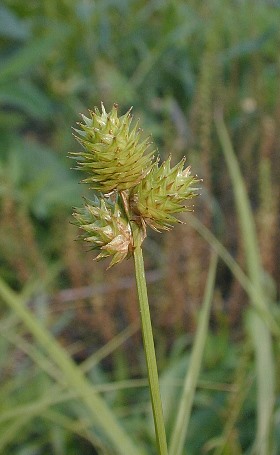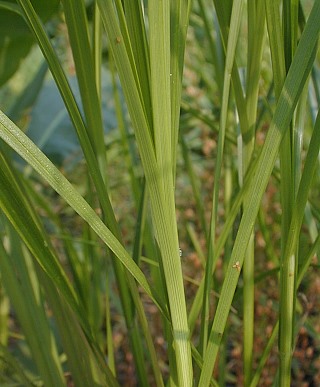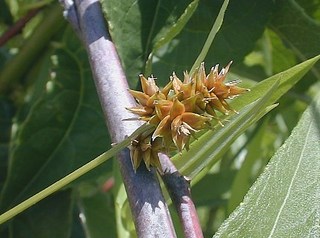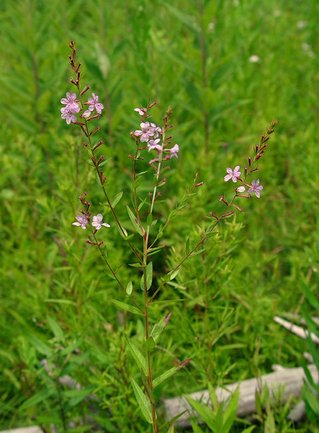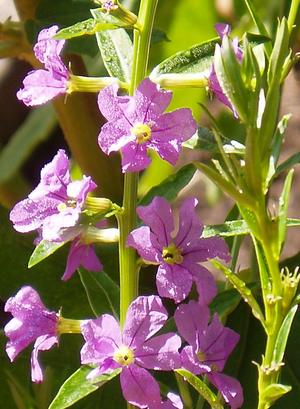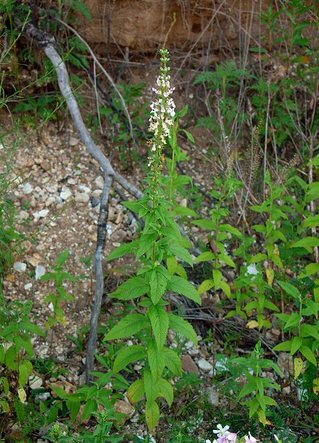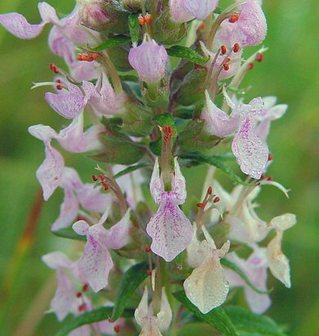Not sure how many are needed, between the common garden and next to Hjelm house, could someone bag coreopsis palmata tops for me? My goal is to get 20 plants with two heads covered. That way I can self-pollinate one head and cross-pollinate another head.
Additionally, if Laura and Katie could check nice island across hwy 27 to see how far along the bagged psoralea is to flowering, that would be great also.
Attached is a picture of each plant.
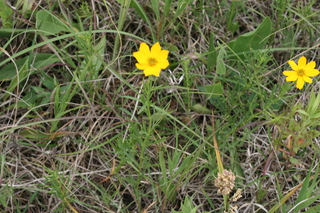
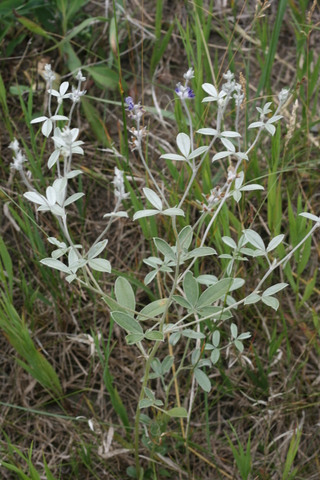
|
||||
|
Here’s what needs to be done tomorrow, around 10am, for pollinating Cirsium altissimum at Hegg Lake. I will provide a clipboard with a data sheet, map, and pollinating tools. Plant numbers are on flags to the south of the plants. Plant 9-7 has a yellow twist-tied head that is flowering right now. It will need to be selfed. Yellow tt heads on plants 9-16,-6, and -8 may be flowering tomorrow. If so, they also need to be selfed. Plant 9-19 had two bagged yellow heads. One is done flowering, the other may be flowering tomorrow. If the second one is flowering, it should be selfed. 9-26 with a red tt may be flowering. If so, it needs to be crossed. Cross pollen can be obtained from 9-14, which has a white tt and is blooming now, or 9-21, which may be flowering tomorrow. To pollinate the heads, use a q-tip provided. For selfing, just rub the q-tip over the anthers to collect the pollen, then brush the q-tip on the stigmas. The pollen is very sticky and will easily stick to the q-tip. For crossing, rub a q-tip on the anthers of a pollen donor (white tt). Place in a labeled glass vial, transport to the head to be crossed, and rub the stigmas with the q-tip. Be sure to write down which plant was used as a pollen donor. Here’s a histogram of pollen sizes (~30 grains per species) from 3 individual plants of Coreopsis palmata, Echinacea angustifolia, and Heliopsis helianthoides. Greg outlined the methods taking the measurements here. Greg, what software program did you use? August looks like it will be my busiest month this summer. I’m currently working on four species, and will expect to start two more before the end of the month. Here’s the status of my species so far. Pediomelum esculentum- I have collected fruit from all of my experimental plants. I have not started to count seed yet. Dichanthelium oligosanthes- I have finished collecting fruit and am in the process of counting seed. From what I’ve seen so far, D. oligosanthes is SC, although I can’t rule out agamospermy. Asclepias viridiflora- These plants are also in fruit. Of my selfed flowers, only one has remained on the peduncle. I doubt it will turn into a fruit, which could mean one of two things: A. viridiflora is SI, or I’m not qualified to be an Asclepias pollinator. Potentilla arguta- My plants have finished flowering and are in fruit. I’m waiting for them to mature so I can start collecting. Panicum capillare- I have about twelve inflorescences bagged and am trying to get the “styles on agar” method to work. Cirsium altissimum- There are lots of plants and will be over a hundred heads to work with out at Hegg Lake. At this point none have flowered yet, but I have them all flagged, twist-tied, and ready to go. Potentilla pensylvanica- I have been pollinating these at Glacial Lakes State Park for a few days now. They don’t flower a lot and they are nearing the end of flowering, but I believe I will manage to get enough pollinated before they finish. Either way, Glacial Lakes is a beautiful place to be doing field work! Teucrium canadense- While checking out some Carex yesterday I discovered Teucrium growing at the back hill. There were enough plants to work with and not yet done flowering, so I flagged and bagged today. Tomorrow I will begin pollinations. I also expect to be working with at least Muhlenbergia cuspidata and Solidago speciosa before the summer ends. On July 20th I collected pollen,separated into three microfuge tubes, from plant 36, 958. Tube #1 has been left at room temperature, #2 is in the refrigerator, and #3 is in the freezer. There wasn’t much pollen available, so I hope it’s enough to try some pollinations and see how long the pollen stays viable under the three treatments. I have returned to take images of pollen as seen below. It will still be a few hours/days/more? to get the images as desired but this is a start. I am predicting some trouble to distinguish between coreopsis, helianthus, and echinacea so be ready to be distinguishing. Over the years I have made several notes about locations of Asclepias viridiflora individuals. I have not noted the species at Staffanson Prairie Preserve. I’ve copied notes below. I can show you where these plants are (on a map or live)… 2-July-1998 site eth 1-Aug-1998 site eth 23-July-1998 site nolf I have mapped an Asclepias viridiflora individual at NRRX. No notes, just the location. I have collected several seed pods from A. viridiflora at the landfill. Here are the records… Finally, here’s a note from my visor from earlier today. The yellow flags are at your prairie turnip plants. Note-to-megan 7/3/09 9:31 am landfill Asclepias viridiflora 2 fl plas between yel flags 1-02 & 1-28 1 fl pla between yel flags 1-31 & 1-52 1 fl pla SSE of yel flag 1-47 (far S) in dip Here is some information passed on to me by Megan Jensen about the breeding systems of common native prairie species. Notice, there are many holes! Hopefully, this sort of information will assist us in moving to a new, exciting phase of the Echinacea project … which everyone will have to wait just a little longer to hear about. Have I piqued your interest? |
||||
|
© 2024 The Echinacea Project - All Rights Reserved - Log in Powered by WordPress & Atahualpa |
||||


